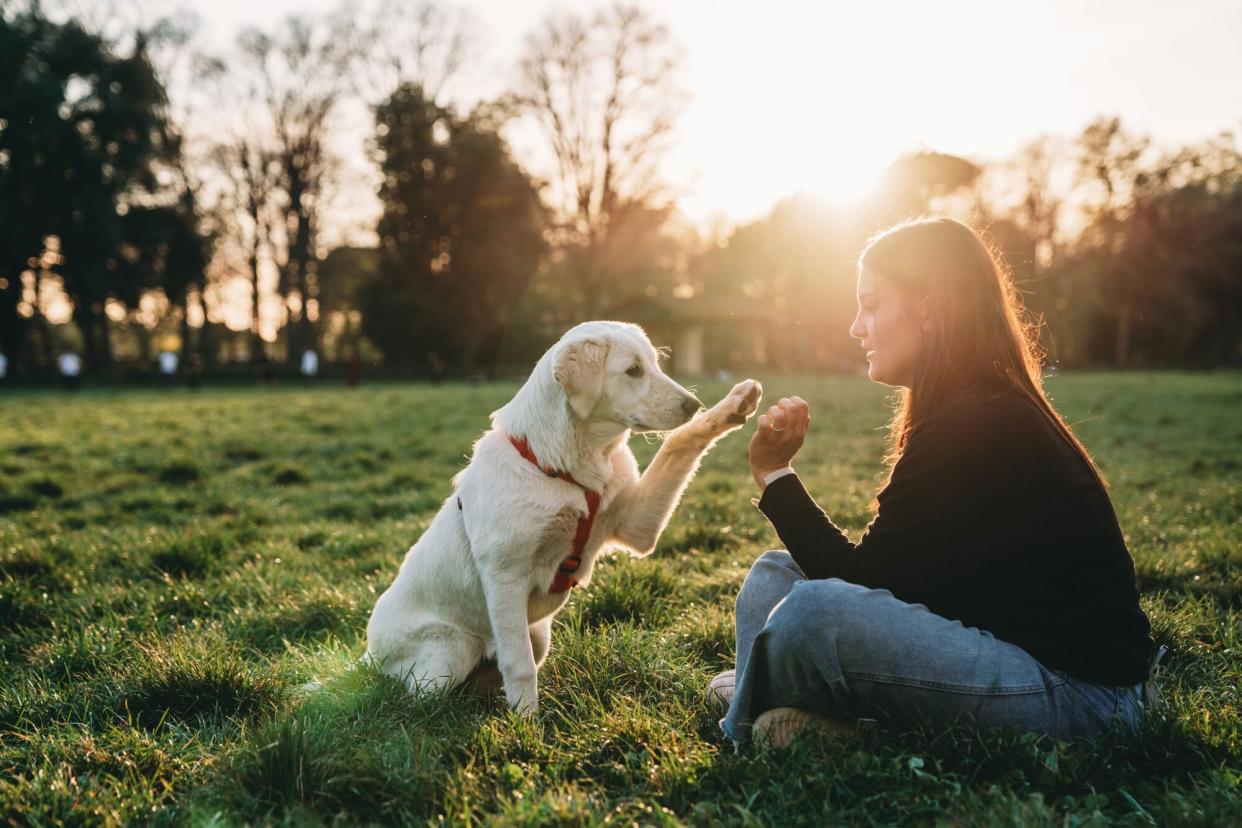Is Your Dog Right- or Left-Handed? Here's How to Find Out, According to New Research

GETTY IMAGES
You know your dog's favorite toy and the snacks they get most excited about, but did you know your pet may also have a preference when it comes to handedness? According to a recent meta-analysis published in Laterality, some dogs have a paw they favor most when completing certain tasks, like walking down the stairs, reaching for a treat, and holding a toy.
The study found that dogs are most likely to prefer a specific paw rather than be ambidextrous, with 68 percent of canines showing either left- or right-sided paw preference. However, unlike humans who are predominately right-handed, the dog population as a whole doesn't favor a specific paw. Instead, paw preference is believed to vary from dog to dog.
Related: 7 Common Things That Actually Scare Your Pets, According to Veterinarians
While many dogs appear to be paw-preferent, the foot they favor may vary depending on the task at hand. One study, for example, found that when using a conical ball (a toy used to give pets treats, like peanut butter) there was a roughly equal distribution of paw preferences, with some favoring the left, right, or both paws. On the other hand, for repetitive tasks—like being asked to give a paw to their owner—canines appeared to have a more specific paw preference rather than display an ambidextrous response. (Ask your pup to give you their paw a few times to see which one he or she favors most!)
Other studies included in the meta-analysis make a case for the role sex plays when it comes to paw preference. Generally, female dogs are more likely to favor the right paw, while males are more likely to use their left paw.
But why is it important to know which paw your pet favors? According to one study included in the recent research, paw preference is a useful tool for assessing emotional functioning and psychological well-being in both dogs and cats. The left side of a canine's brain is responsible for processing positive emotions, while the right side prioritizes negative feelings, like anxiety. Paying attention to which paw your dog favors may provide insight into how your dog is feeling emotionally.

